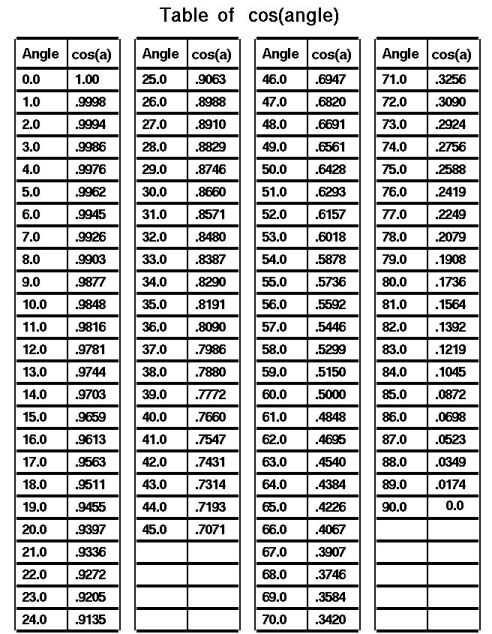

Trigonometry Tables |
 |
 |
 |

In any right angled triangle, for any angle:
the length of the opposite side = The sin of the angle
the length of the hypotenuse the length of the adjacent side = The cos of the angle the length of the hypotenuse the length of the opposite side = The tan of the angle the length of the adjacent side The hypotenuse of a right angled triangle is the longest side, which is the one opposite the right angle. The adjacent side is the side which is between the angle in question and the right angle. The opposite side is opposite the angle in question. sin = o/h cos = a/h tan = o/a
Often remembered by: soh cah toa |
 |
 |
 |
In any right-angled (one angle is exactly 90 degrees) triangle, the square of the length of the hypotenuse (C - the side opposite the right angle)
is equal to the sum of the squares of the other two (A, B) sides. The Pythagorean theorem can be expressed as the Pythagorean equation:
A2 + B2 = C2 C=square root of ( A2 + B2 ) A=square root of ( C2 - B2 ) B=square root of ( C2 - A2 ) |
|
↑ Recommend ZRD |
|